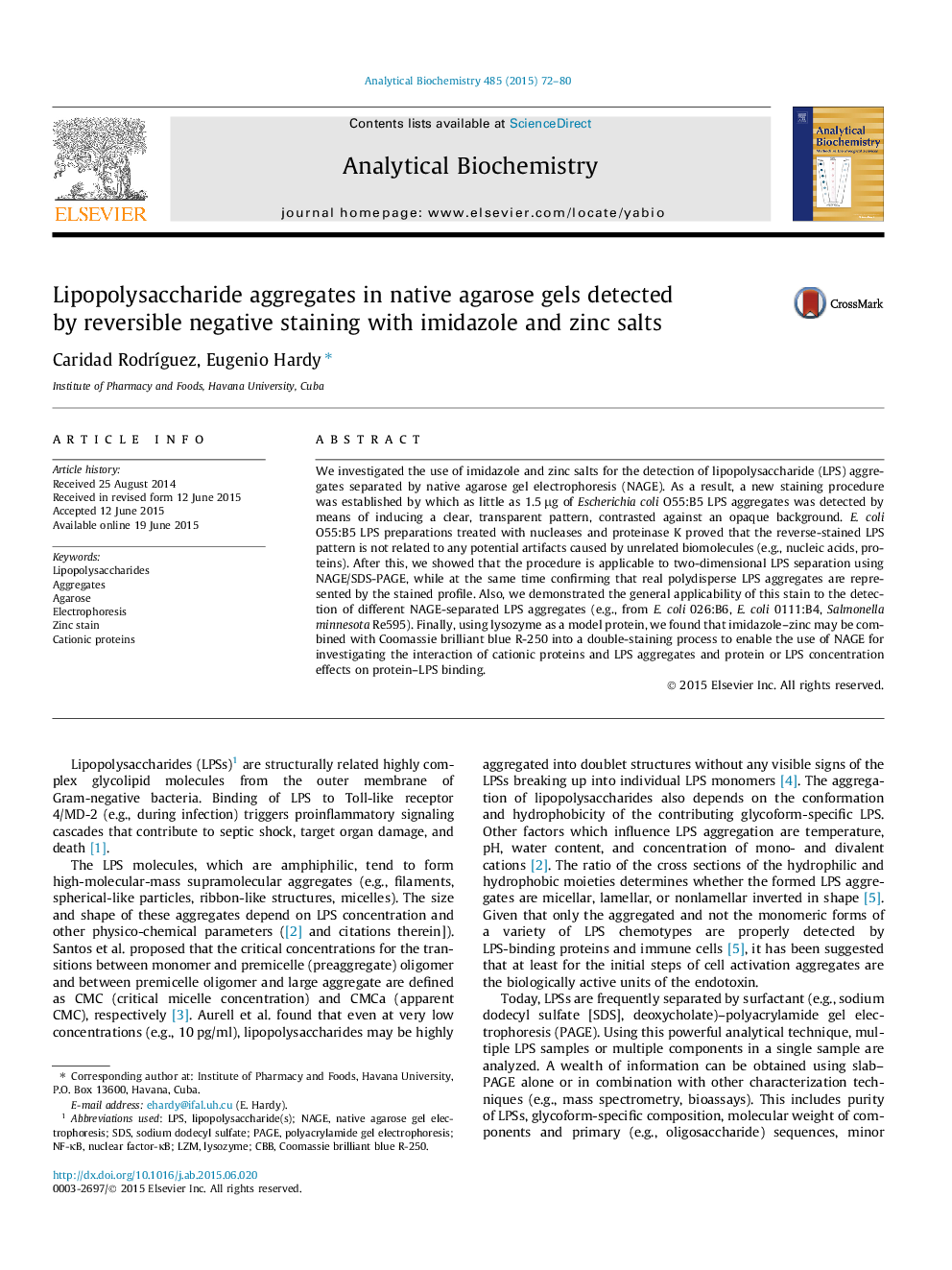| Article ID | Journal | Published Year | Pages | File Type |
|---|---|---|---|---|
| 1175677 | Analytical Biochemistry | 2015 | 9 Pages |
We investigated the use of imidazole and zinc salts for the detection of lipopolysaccharide (LPS) aggregates separated by native agarose gel electrophoresis (NAGE). As a result, a new staining procedure was established by which as little as 1.5 μg of Escherichia coli O55:B5 LPS aggregates was detected by means of inducing a clear, transparent pattern, contrasted against an opaque background. E. coli O55:B5 LPS preparations treated with nucleases and proteinase K proved that the reverse-stained LPS pattern is not related to any potential artifacts caused by unrelated biomolecules (e.g., nucleic acids, proteins). After this, we showed that the procedure is applicable to two-dimensional LPS separation using NAGE/SDS-PAGE, while at the same time confirming that real polydisperse LPS aggregates are represented by the stained profile. Also, we demonstrated the general applicability of this stain to the detection of different NAGE-separated LPS aggregates (e.g., from E. coli 026:B6, E. coli 0111:B4, Salmonella minnesota Re595). Finally, using lysozyme as a model protein, we found that imidazole–zinc may be combined with Coomassie brilliant blue R-250 into a double-staining process to enable the use of NAGE for investigating the interaction of cationic proteins and LPS aggregates and protein or LPS concentration effects on protein–LPS binding.
